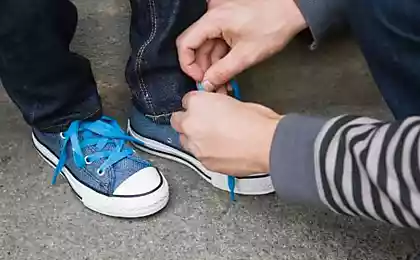159
"We ate well today." How to Raise a Neurotic Instead of a Happy Child

The neurology of symbiosis: Why "we" is more dangerous than "me"
A study by the Cambridge Center for Neurodevelopment (2023) showed that children with blurred boundaries of “me” are 4 times more likely to suffer from anxiety disorders. Neuroscientist Sue Gerhardt explains this by the phenomenon of “mirror neurons trapped” – when a child loses the ability to distinguish their emotions from their parents.
4 Signs of Emotional Merger
- Use the pronoun “we” instead of “you/I” (“We peed”)
- Commenting on natural processes ("Are you hungry!" instead of "Do you want to eat?")
- Projection of your feelings ("You're cold" with your own chill)
- Fear of child autonomy ("Don't get in, I'll do it myself")

The price of hypercare: Neurons under the hood
“Love without respect for borders becomes a prison for the developing consciousness.” - Gordon Newfeld.
Experiment of the Institute of Child Psychology (2024):
- Children with over-engaged parents show 37 percent fewer creative decisions
- 68% of subjects have an underdeveloped prefrontal cortex
- Reducing dopamine levels with independent actions
Case: "umbilical cord 2.0" syndrome
An analysis of 500 family chats revealed a pattern: guardian parents ask 300% more questions per day than they need. Neuroscientists warn that this forms an “instruction waiting syndrome” – an inability to self-regulate.
Antidote: Practices of Healthy Separation
Step 1: Resetting the language
Dr. Petranovska's method:
- Replace "we" with "you" ("you ate well")
- Turn statements into questions (“Are you warm?”)
- Enter "minutes of silence" - 3 periods of 15 minutes without verbal contact

Step 2: Training the muscles of choice
The Montessori Center Experiment:
- Offer 2-3 options daily
- Allow "safe mistakes" (shed juice, torn clothes)
- Gradually increase the radius of independence (+1 year = +100 meters)
Glossary
Symbiotic relationship
Pathological fusion of emotional boundaries of parent and child
Prefrontal cortex
Brain area responsible for planning and decision-making
Instruction waiting syndrome
Inability to act independently without external guidance
Complexes that are raised by parents: Ecology of Child Consciousness
How to stop judging others: The art of seeing a world without filters























